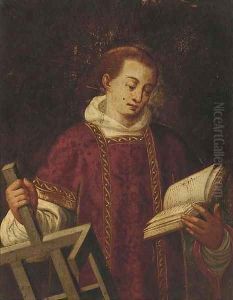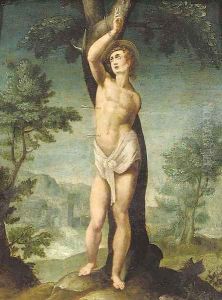Useppe (d'Arpino) Cesari (Cavaliere) Paintings
Giuseppe Cesari, known as Cavalier d'Arpino or simply Cavaliere (Knight), was an Italian Mannerist painter active mainly in Rome during the late 16th and early 17th centuries. He was born in 1568 in Arpino, a small town in the region of Lazio, Italy. His father was a painter, which likely gave Cesari his initial exposure to the world of art. The family moved to Rome when Cesari was quite young, and it was there that he began his artistic career.
Cesari quickly gained a reputation for his talent and was favored by Pope Clement VIII, who knighted him and gave him important commissions. This led to the nickname 'Cavaliere d'Arpino.' He became one of the most prominent painters in Rome at the turn of the century, creating works for various churches and palaces. His style combined the grace of the late Roman Mannerism with a nascent Baroque vigor, which can be seen in his dynamic compositions and the emotional intensity of his figures.
Among his notable works are the frescoes in the Palazzo dei Conservatori on the Capitoline Hill, and in the Cappella Olgiati in Santa Prassede, Rome. He was also responsible for the decoration of the Cappella Paolina in Santa Maria Maggiore. Cesari’s influence extended to his many pupils, the most famous of whom was Caravaggio, who worked in his workshop for a brief period. This mentorship, however, was short-lived as Caravaggio's radically naturalistic style clashed with Cesari's more graceful Mannerist tendencies.
Cesari's work, characterized by its elegance and vibrant colors, fell out of favor as the Baroque style became dominant. Despite this, he continued to receive commissions and worked until his death in 1640. His legacy lives on through his significant contribution to Roman art at the cusp of the Baroque era, and through the works of his followers, who carried the torch of his artistic ideals into the next generation.

